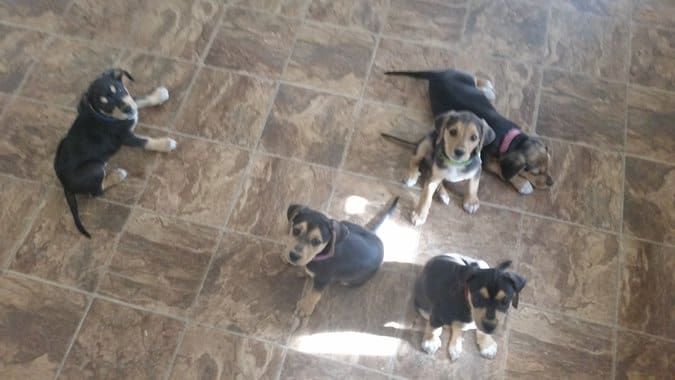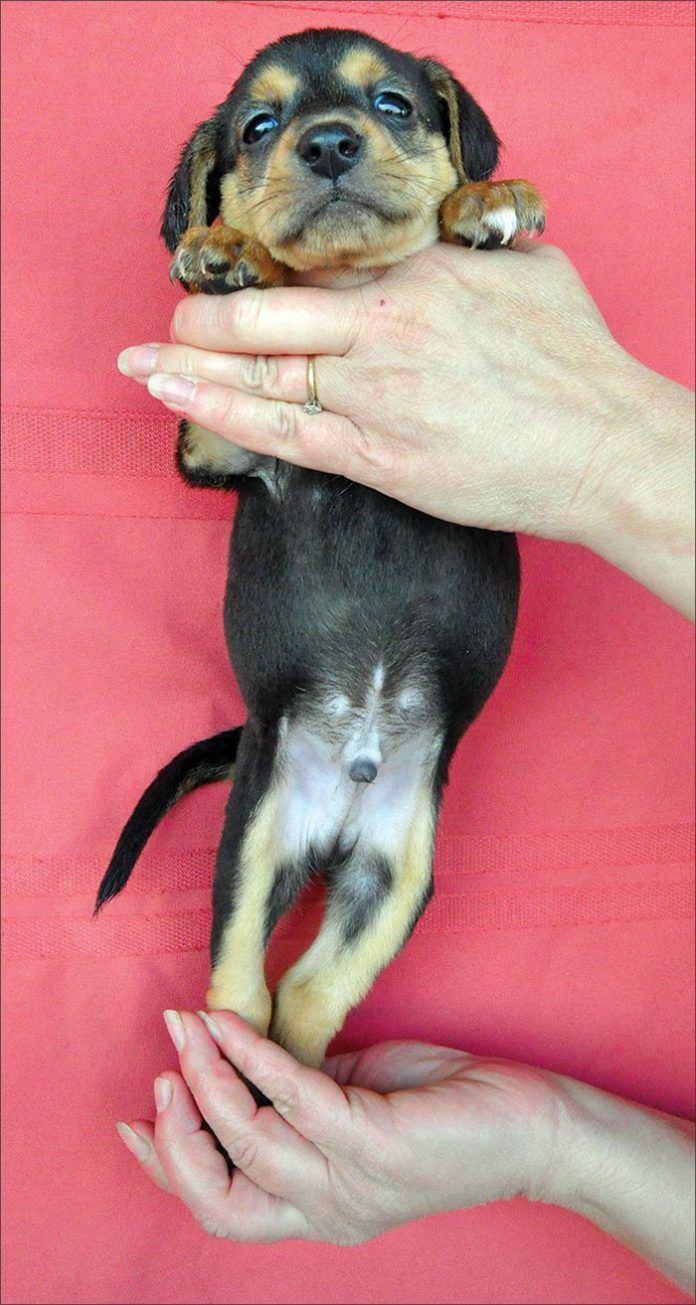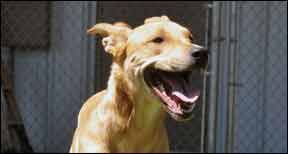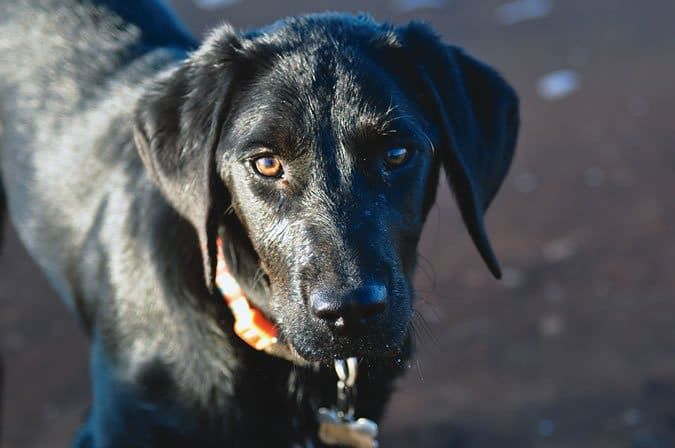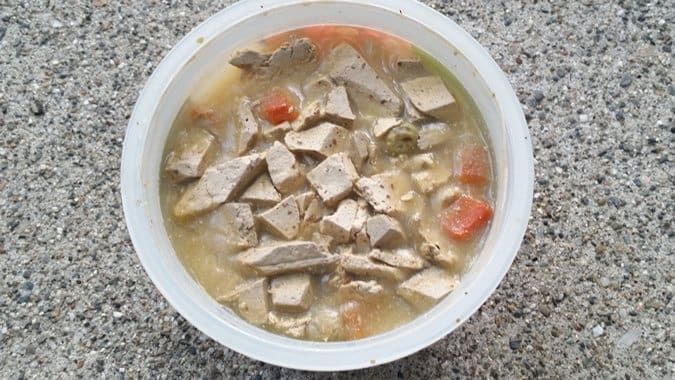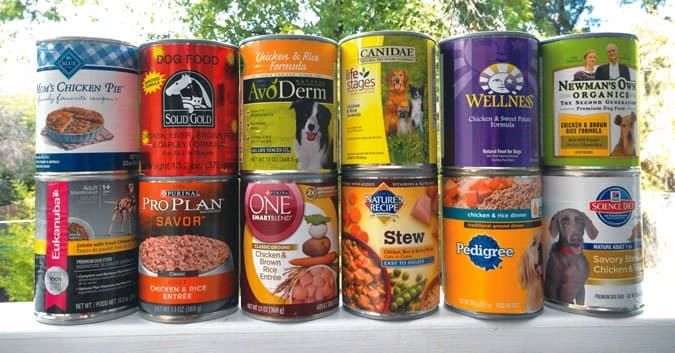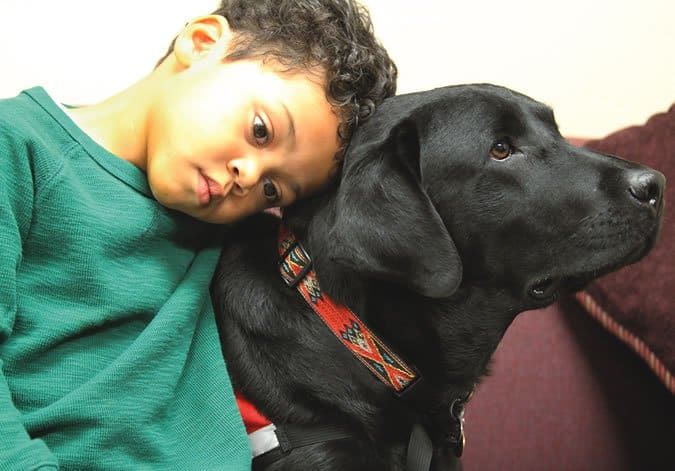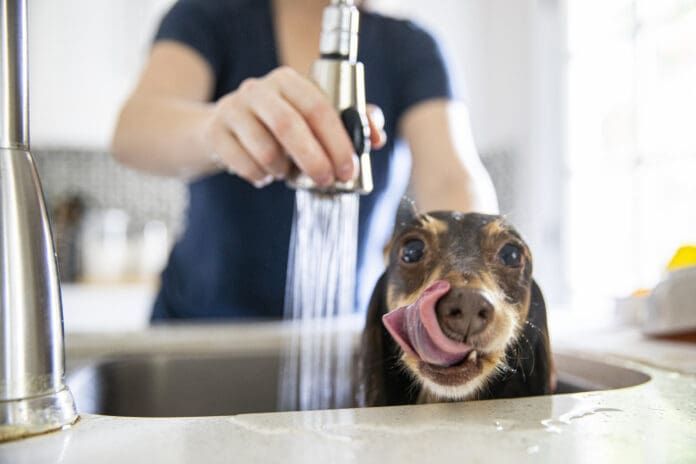Giving a dog a bath at home is sort of like mixing a cocktail, or hitting a golf ball: It seems deceptively straightforward, but you need a lot of background knowledge to really master it. Some dogs simply hate baths while others look forward to it. From what kind of shampoo to use to how frequently your dog should be sudsing up, there are all kinds of technical questions to consider before grabbing that spray hose and going to town. But there are also deeper issues at play: Nothing quite lays bare the state of your relationship with your dog like trying to negotiate that slippery expanse of porcelain together. Here are some tips for smooth sailing, at bathtime and beyond.
How Often Should You Give a Dog a Bath?
Groomer Anna Stromberg of Vista, New York, hears a lot of misinformation about canine cosmetology from new clients. One of the whoppers? That bathing your dog is not good for his skin.
Stromberg’s reply is always the same: “I ask them, ‘How would you feel if you didn’t wash your hair for three months?'” In response, her clients usually shift around and smile wanly: Itchy, uncomfortable, and out of sorts is the unspoken answer.
But how often to wash a dog is something that varies, depending on the dog’s coat and her activity level. Dogs who spend most of their time snoozing indoors might only need bathing once a month; those who like rolling in the dirt and mud might need weekly soaks. Stromberg says that, again, contrary to popular belief, “Washing your dog’s hair once a week with a good shampoo and conditioner won’t do her any harm.”
In fact, not bathing can have negative consequences, and not just for the dog.
“The cleaner the dog, the fewer problems for you and your family in terms of allergies,” Stromberg says. Smooth-coated dogs, she adds, often trigger more allergies in people – not because they necessarily produce more dander, but because they usually are not washed as frequently as their long-haired counterparts, if at all. “Approach the owner of a Boxer in a park, and ask when was the last time that the dog had a bath; chances are his owners will say, ‘Oh, we never wash him; we only have his nails cut.'”
At the other end of the spectrum are owners who are overzealous with their bathing techniques. “Some people think the more, the better,” Stromberg says, adding that using copious amounts of shampoo might very well irritate your dog’s skin – not the goal at all.
Washing Your Dog in the Bathtub
Unless warm weather prevails and they can move the waterworks outside, most do-it-yourselfers wash their dogs right where they do their own daily ablutions – in the bathtub or shower stall.
Before she became a professional groomer, Mary Oquendo of Pawsitively Pretty Mobile Grooming in Danbury, Connecticut, did just that. And she has some tips for rub-a-dub-dubbers.
“With my larger dogs, I would put on a bathing suit, and I got in the tub with them,” she says. This tag-along approach not only lowered her dogs’ stress level – they thought of it more as play time than a grooming session – but it also likely spared Oquendo a trip to the chiropractor. “If you’re bathing a long-coated dog like a Golden Retriever, that’s a half-hour bent over the tub,” she says. “Your back is going to kill you.”
When it comes to rinsing their dogs, some owners use a small container to repeatedly fill and pour, fill and pour. “Shower attachments are a whole lot easier,” Oquendo advises, adding that portable sprayers that attach to the tub spout are an inexpensive alternative.
Because tubs can be slippery, Oquendo recommends laying down a towel so the dog has better footing. And if you decide not to wade in yourself, she suggests putting another towel on the rim of the tub so you don’t slip on the porcelain surface as you lean on it.
If you don’t like the idea of turning your bathroom into a doggie spa, some stores sell portable “booster” tubs that can be set up anywhere there is a hose connection, such as your garage or basement. But Oquendo reminds that while the elevated tub will save your back, getting your dog up that high can take some effort, especially if he doesn’t think it’s such a great idea.
(If money is no object, pop over to Pinterest and type in “dog bathtub.” There are plenty of photos of custom-made grooming stations in laundry rooms, including ones with cabinet doors that pull out to reveal built-in stairs.)
As for toy and similarly sized dogs, you already have a handy, appropriately raised bathing receptacle: It’s called the kitchen sink. That’s where Oquendo’s two “Chi-wees” get their baths, even though she has a fully equipped grooming van parked outside.
Use Pet-Safe Shampoo
Kirstine Reynolds of Groom with a View in Draper, Utah, runs a page on Facebook for groomers. And one of the most hotly discussed subjects these days is the labeling of ingredients – or, more precisely, the lack of it – on shampoos and other grooming products.
“Pet shampoo is not regulated, so manufacturers don’t have to list ingredients,” says Reynolds, who maintains a list of companies that disclose all of the ingredients in their products. Some shampoos contain ingredients that sensitize skin and can cause irritation; others use problematic preservatives such DMDM hydantoin, which controls microorganisms by releasing formaldehyde, a neurotoxin and carcinogen.
Reynolds uses brands such as Isle of Dog and Chris Christensen, though she notes that they have preservatives in them, too. “Shampoos have to contain preservatives,” she explains. “Otherwise, they grow mold and bacteria.”
Oquendo also pays close attention to ingredient lists. She avoids products that take what she calls a “dodgeball” approach, using amorphous terms such as “shampoo-based” or “proprietary mix of essential oils” without more specific information. Oquendo wants to know what ingredients are in her shampoos, and where those ingredients are sourced. “I personally can have a reaction to melaleuca, or tea tree oil,” she says. “I need to know if a product has tea tree in it. My next question is, ‘Where did you get it?’ Because there is some tea tree oil I can use, and it comes down to the manufacturer.”
If you find yourself in a pinch, without any kind of dog-formulated shampoo whatsoever, don’t use your own, which likely contains perfumes that can irritate a dog’s skin. Provided the dog is in good health, bathed regularly, his skin accustomed to being shampooed, and you do an extremely thorough job rinsing his coat, “whatever you use on your children is fine for your dog,” Stromberg says. “You can use Dawn dish soap, too – it’s used on seabirds to get oil from spills off them.”
Dilute That Soap!
According to Oquendo, one of the biggest mistakes people make when bathing their dog is “oversoaping.” Across the board, professional groomers stress that diluting shampoo before applying is the unqualified key to success. Because of its thickness, full-strength shampoo tends to cling to the top of the coat, resisting even distribution and not penetrating to the undercoat and skin beneath.
Oquendo pre-mixes her shampoo in an empty two-liter soda bottle: She adds about a half-inch of shampoo and then fills the rest with water.
Making sure the dog is totally saturated before applying the shampoo is another must. “The wetter the dog, the more the shampoo will mix into the coat,” she says, adding that she starts at the top, with the dog’s back, and then works her way down the sides.
With most dogs, once it not enough: Reynolds says when groomers hand-wash their charges, they shampoo them twice. “Lots of times, on the first shampoo, you won’t get the coat as wet, and it won’t get wet through.”
And don’t forget a good-quality conditioner. “A lot of people think their dogs have allergies when actually the skin is dried out from washing,” Reynolds says. “I condition every dog I bathe – even the short-haired ones.”
Dilute the conditioner just as you do the shampoo, and let it sit on the coat for a minute before rinsing.
Rinse Your Dog Well
That brings us to another important part of the bathing routine that many owners bungle. Residual soap in the coat can irritate the skin, leading to itchiness, flaking, hotspots, and other skin problems.
“Rinse, rinse, rinse,” says Stromberg in the dog groomer’s version of that old “How do you get to Carnegie Hall?” joke. “You need to rinse until you don’t see any more suds.” Then, after you think you’re done, “rinse for another three minutes.” Just to be sure.
Washing Your Dog’s Face
Many owners avoid washing their dogs’ faces, and that’s understandable: Shampoo that inadvertently gets into a dog’s eyes creates just as painful and burning a sensation as it does for we humans. “And you can actually cause ulcers to the eyes if you get shampoo in them and don’t rinse it out,” Reynolds says.
But the solution isn’t avoidance: It’s using the right technique and product.
“I put my hand over the dog’s face and cover the eyes,” whenever washing or rinsing in that area, Oquendo says. “And I tilt the head downward so any soap will run down rather than sitting on top of the head.”
There are a variety of face washes that are specially developed for cleaning this part of a dog’s body. Reynolds recommends South Bark’s Blueberry Facial, which can also be used as a full-body shampoo.
Brushing Up
With a long-coated dog, the best time to brush and comb the hair is while it is still wet, not dry. “If you have a longer-coated dog that has more hair, like a Shih Tzu or a Goldendoodle, the best time to comb them out is when the hair is damp,” Reynolds says. “That’s when hair is flexible, and it’s easier to see where the tangles are.”
But if you haven’t been regularly brushing and combing your dog, don’t expect a bath to miraculously leave her looking like a Breck Girl. In fact, if you bathe a longhaired dog whose grooming has been neglected – Oquendo’s rule of thumb is that a dog with a coat more than an inch long should be groomed every day – you will be doing more harm than good. “It’s like washing a wool sweater,” Reynolds says. “It just causes the tangles to get even tighter.”
If your dog has an unkempt and possibly matted coat, immediately head to a professional groomer to have it taken care of. Do not attempt to yank or cut out the mats yourself: The aftermath just might land your dog at the vet’s office.
Oquendo reminds that brushing and combing have different functions: The brush is the advance man, loosening up the coat to make it ready for the more narrowly spaced tines of the comb. If the comb begins to meet resistance, don’t try to force it through. Instead, return to the brush until you’ve made enough headway to start combing again. (Note that the tines on either end of the comb are spaced differently. At the start of your combing session, start with the wider end. As the coat gets smoother, switch to the narrower side.)
“Combing is really important,” Oquendo says. “And that means getting that comb right down to the skin. Otherwise, it’s just surface brushing, and if you part the coat, there are mats beneath.”
Not surprisingly, the quality of the brushes and combs you use is very important. “Basically, the more you spend, the better the quality,” says Oquendo, who has paid as much as $85 for a comb. Cheap-quality brushes have tines that are simply cut, as opposed to rounded, and will scratch the skin.
Manage Your Own Expectations
Get a bunch of dog groomers together for coffee, and chances are the talk invariably turns to the “Doodle” explosion among their clients. Their gripe isn’t with the dogs themselves: It’s with the owners who have selected a particular type of dog without understanding the grooming – and, often, temperament – issues that come with it.
“Doodles are one of the hardest dogs to wash because their coats are so dense,” Stromberg explains. Thanks to the designer dog’s mixed heritage – a Poodle typically crossed to a Labrador or Golden retriever – “you’re dealing with double, curly coats with undercoat. And with hyper dogs – a dog who has lost his patience by the time you’ve wetted him down.”
The kind of coat your dog has will help you determine how much bathing and grooming she needs, and what products will work best for her. And while there are general rules of thumb (“Nine times out of 10, a German Shepherd will shed more than an Afghan Hound, and a German Shorthaired Pointer will shed less than a Lab,” Stromberg says) there can be big variations among dogs of the same breed or type.
Bathing does cut down on shedding, but “some dogs will never stop shedding, even if you bathe them once a week,” Stromberg says.
Of course, you love the dog you love. But if you decide to buy a purpose-bred dog, seek out a reputable breeder who pays attention to coat quality, especially in breeds with long or distinctive coats, such as terriers. Dogs with poorly textured coats are much more difficult to keep clean, bathe, groom, and maintain.
Drying Off Your Dog
Once a dog is properly bathed, getting him dry is the next step. As you might expect, towels are a must – lots and lots of towels. “Absorb as much as you can after you’ve rinsed your dog well,” Reynolds advises. “The more moisture you absorb with the towel, the faster they dry.”
Consider investing in a drying towel, which has an absorbent, deep-pile surface that wicks water away from your dog’s coat, like a shammy cloth.
A good toweling and brisk romp through the backyard (weather permitting, of course) is likely all a short-coated dog needs to get dry. But dogs with double coats, such as Akitas or Samoyeds, require extra help.
“Undercoat is designed to insulate, and when that insulation is not needed, it comes out – all over your house,” Reynolds explains. When professional groomers dry double-coated dogs, they use dog-specific dryers that blast room-temperature air at such high velocity that the downy undercoat is loosened and pushed out. That, in turn, significantly reduces the amount of shedding – those tumbleweed-like tufts that can turn your living room into a convincing approximation of an Arizona ghost town.
Drying a dog with a hand-held blow dryer takes a lot of time (especially if you use the lowest possible setting to prevent unintentionally burning or overheating the dog), and it does nothing to remove the undercoat. While high-velocity dryers are available to non-professionals, they require skill and experience to operate safely.
“They can be really dangerous in the wrong hands,” Reynolds warns. “You could literally blow a Yorkie across the room with one.” If not placed properly, high-velocity dryers “can pop an eardrum or even a lung,” she adds. “They are great equipment, if someone takes the time to learn how to use them properly.” You should never use a high-velocity dryer around the head, and using a product like a Happy Hoodie (see happyhoodie.com) is a good idea: It not only safely covers the ears, but it also applies calming pressure, because force-drying is very often a stressful experience for a dog, especially one who is new to it.
Some owners might decide that all this bother isn’t worth it, and so they opt to shave a dog like a Golden Retriever to eliminate the problem. But this has its quandaries as well.
“The mechanics of a double coat are that the undercoat keeps the dog cooler in summer and warmer in winter,” Reynolds explains. “When you shave off that double coat, you’re also removing the dog’s means of regulating his body temperature. Shaved dogs are more susceptible to bug bites and sunburn, and shaving off the top coat will make the undercoat shed more.” As a result, Reynolds rarely recommends shaving, except in cases where the dog is severely matted.
Calming Your Dog’s Nerves
More than having a super-clean dog, Stromberg stresses that the goal is having one who is safe, too.
For instance, dogs can break legs from jumping out of tubs and sinks. While you can try to foil escape artists by keeping your dog restrained while bathing – Reynolds suggests investing in a detachable grooming loop that suction-cups to the side of tub – just as important is making sure that your dog is comfortable with the whole process to begin with.
Because prevention is worth a pound of cure, start teaching your dog from puppyhood that the bathtub is a fun place where extraordinarily good things happen. Periodically leave treats on the edge of the tub; once your puppy is big enough to hop over the sides, place the goodies inside the empty tub. The idea is to program your dog to want to investigate the tub, and then get comfortable with the idea of jumping into it, which is often the biggest hurdle to bathing. If you get really ambitious, you can practice stand-stays in the tub whenever you are passing by.
When it’s bath time for real, have lots of treats at the ready. “I go really slowly,” Reynolds says, adding that some dogs find the sound of the spray nozzle to be very disconcerting. If that’s the case, she switches to a small bucket to hand-pour the water.
Bath water should to be warm to the touch, about 85 to 90 degrees for a dog with normal, healthy skin. If a dog has allergies or any type of skin irritation, the temperature should be a bit cooler.
The Once-Over
Use bath time as an opportunity to check your dog over carefully and notice minute changes that might not be readily apparent from just looking.
Oquendo greets her regular four-legged customers by rubbing her hands all over the dog’s body, checking for anything out of the ordinary.
“I’m feeling for lumps, bumps, cysts that may have popped, injuries, and huge matted spots,” she says. “I’m also checking for body language. If as I’m coming down the back leg I feel the dog stiffen, it might mean that the dog is dealing with arthritis or an injury.”
Oquendo also lifts the dog’s lips to make sure the gums are rosy and healthy-looking; she has sent dogs to the vet because she found gums that were pale, a sure sign of illness.
Rock On
Because grooming can be stressful for even the most well-adjusted dog, Oquendo uses crystals to help center her canine clients’ emotions.
“I have a big hunk of rose quartz that sits in my tub,” she says. “It has very calming, gentle energies.” Cleansing stones of accumulated energy is important, and because Oquendo’s rose quartz is constantly being showered with water, that does the job nicely.
She also will use clear quartz, an “amplifying” stone that is often helpful with elderly dogs who need an immune boost. (But she tucks it away when she’s grooming naughty or headstrong dogs, who definitely do not need those qualities amplified!) Another favorite grooming stone is amethyst, an “all-purpose stone that’s really good for animals and children.”
Oquendo suggests that owners do as much as possible to the bathing environment to reduce stress and make it pleasant for the dog. In her grooming van, she plays chakra-balancing music. And while she is a Reiki practitioner, she usually prefers to keep Reiki treatments separate from bathing and grooming, unless a dog is grieving or very arthritic.
Oquendo believes in making grooming time the best it can be for the individual dog, and she promotes this philosophy through an organization she is helping found called the Society of Holistic Pet Stylists. “It’s about being mindful of the animal,” she says, which includes making the experience as low-stress as possible, and using products best suited for each dog, whether it’s a mineral-salt or essential-oil shampoo, or a medically formulated one to address a specific skin condition.
It’s not only the dog who benefits from this sort of approach. “A nicer experience for the dog becomes a nicer experience for me,” Oquendo says. Bath time doesn’t just have to be a chore; if you approach it correctly, it can be a rich time for connecting and bonding with your cherished companion.
Denise Flaim of Revodana Ridgebacks in Long Island, New York, shares her home with three Ridgebacks, 10-year-old triplets, and a very patient husband.


